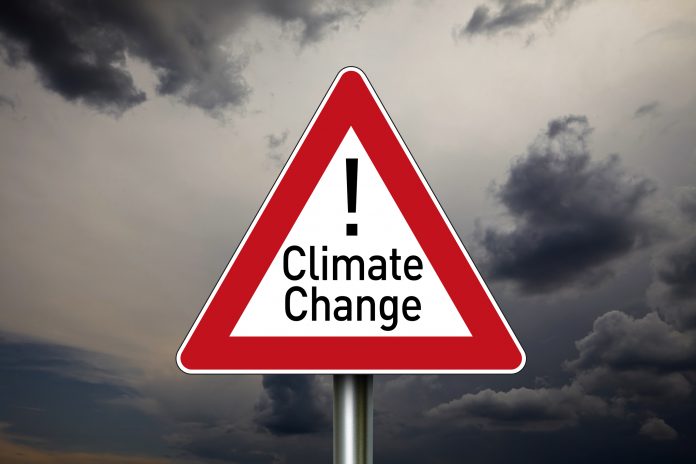Editor of Open Access Government, Jonathan Miles, focuses our thoughts on aspects of climate change and energy transition in Europe’s cities
When it comes to climate change and energy transition, 64% of Eurocities members have made a commitment to become climate neutral by 2050. Also, close to 90% of Eurocities members have adopted a climate adaptation strategy to protect their citizens and adjust to the impact of climate change. In cities, there is much experience and expertise to come up with the right solutions. Certainly, when we think about the move in the direction of a climate-neutral society, strong collaboration across different levels of government is needed, particularly in crucial areas such as renewable energy and transport.1
Energy
In Prague, a more energy-efficient, integrated and environmentally friendly public transport system is the heartbeat of their environmentally friendly public transport system. Electric rail transport, the metro, trams, suburban railway and new battery-powered trolleybuses are all connected via transport terminals which bring together different modes of transport, such as bicycles and buses.2
In Antwerp, 530,000 people (about one-third of the city) face energy poverty in the view of the city’s Deputy Mayor, Tom Meeuws. Looking ahead, the Deputy Mayor wants to intensify endeavours for public-private partnerships to decrease energy poverty and support renovations, plus carry on the efforts to bring together energy suppliers, tenants and private owners to promote the uptake of energy-saving solutions. In total, Antwerp funds no less than €4 million annually to reduce energy poverty. One goal of the Green Deal concerns that a transition in the direction of climate neutrality before 2020 had to include combatting energy poverty.3
In Tallinn, Estonia, an Energy Agency was set up in 2013 to oversee energy and climate policies by municipal agencies. The first electric power plant opened in Tallinn in 2009 and a second during 2018, both of which are run on 90% renewable energy sources, mainly wooden chips, and as such, minimises the use of fossil fuels for city heat. “The electricity they generate meets the needs of over 130,000 apartments — which covers all apartments in the Tallinn district heating system,” Kerttu Märtin explained in a Eurocities paper, CITIES LEADING THE WAY ON CLIMATE ACTION.4
Transport
While the European Green Deal aims to reduce greenhouse gas emissions, cities have a vital role to play if the EU is to reach an ambitious 90% reduction in transport-related emissions by 2050. An essential aspect of this clean mobility vision is phasing out polluting vehicles. While zero-emission vehicles are an obvious option, Eurocities explains that there is another option for cities, in that they “can also create an integrated, connected, inclusive and active transport system with infrastructures that cater to all user’s needs.”
Also, a system that runs on clean fuels makes light mobility options such as walking and cycling an obvious option. Certainly, this vision is even more feasible following the switch to active mobility during the COVID- 19 pandemic.5 During the most recent Eurocities Mobility Forum, Jean-Claude Dardelet, Deputy Mayor of Toulouse said that “mobility mix will evolve” – it is certainly true that public transportation takes the brunt of the current pandemic and as such, “active and shared mobility being at the centre of a new revolution,” Eurocities state.6
A just and green transition
At the online Eurocities 2020 conference in November, city leaders and experts explored the pathways for recovery and resilience during post-COVID-19 pandemic days, where they talked about the future of cities. “If treated as partners in Europe, cities can be the place where green and just recovery happens,” Anna Lisa Boni, Secretary General of Eurocities, comments. Certainly, cities can bring innovation when it comes to public services, governance and financing, she adds. Boni also says there is a strong need for joined-up thinking and reminded conference speakers and attendees that there are many ways to enact a just and green transition: the EU’s Green Deal, through climate law or public procurement, for example. Cooperation between the European, national, and local governments is the most urgent issue and cities can also bring innovation and governance to tackle the issues, Boni adds.7
In October 2020, in a message shared by nine European mayors in a letter sent to the presidents of the EU institutions, they stressed that recovery must start local. “The coronavirus crisis and the pressing need in its wake for a sound and green economic recovery poses a severe challenge to Europe that requires the full commitment of all levels of government,” the European mayors said. The mayors also commented that “not only have cities been disproportionately impacted by the crisis, but they are also uniquely placed to address the immediate and long-term needs of their citizens.”
Responding to the mayors’ letter, Anna Lisa Boni stands up for the cities of Europe and her words are a fitting way to conclude this article: “The biggest EU budget ever is on the table to pull Europe out of this crisis. Our cities have been hardest hit and our city leaders have already proven they can respond rapidly to urgent needs. Investing in Europe’s cities is essential to build back better and plan for a green and just recovery. That’s why these mayors of nine major European cities…called for the EU’s Recovery and Resilience Facility to be channelled to the local level. We hope the EU institutions and member states will listen to this important message!”8
References
1 https://eurocities.eu/goals/climate-change-and-energy-transition/
2 https://eurocities.eu/stories/carbon-free/
3 https://eurocities.eu/latest/heating-or-eating-interview-with-tom-meeuws-deputy-mayor-of-antwerp/
4 https://eurocities.eu/wp-content/uploads/2020/08/EUROCITIES_cities_climate_action_2019.pdf
5 https://eurocities.eu/goals/clean-and-active-mobility/
6 https://eurocities.eu/latest/cities-and-the-eu-together-for-green-mobility/
7 https://eurocities.eu/latest/reinventing-cities-via-livestream/
8 https://eurocities.eu/latest/mayors-to-eu-our-recovery-must-start-local/











